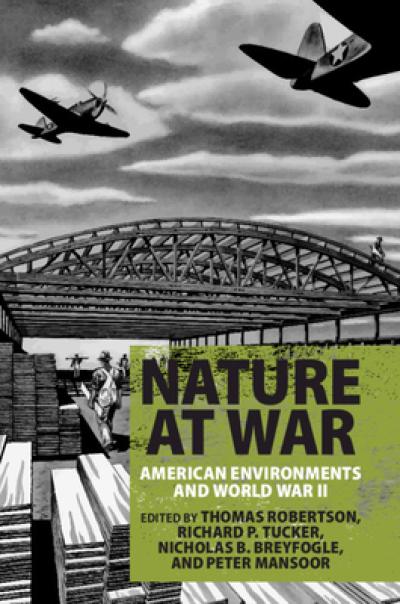Nature at War, American Environments and World War II

Cambridge University Press
ISBN: 9781108412070
This anthology is the first sustained examination of American involvement in World War II through an environmental lens. World War II was a total and global war that involved the extraction, processing, and use of vast quantities of natural resources. The wartime military-industrial complex, the 'Arsenal of Democracy,' experienced tremendous economic growth and technological development, employing resources at a higher intensity than ever before. The war years witnessed transformations in American agriculture; the proliferation of militarized landscapes; the popularization of chemical and pharmaceutical products; a rapid increase in energy consumption and the development of nuclear energy; a remaking of the nation's transportation networks; a shift in population toward the Sunbelt and the West Coast; a vast expansion in the federal government, in conjunction with industrial firms; and the emergence of environmentalism. World War II represented a quantitative and qualitative leap in resource use, with lasting implications for American government, science, society, health, and ecology.
- Offers an in-depth examination of the twelve dimensions of the wartime environmental experience in the United States
- Reveals how transportation networks, mines, farms, factories, and training camps transformed the US into an 'Arsenal of Democracy'
- Contributes to the understanding of the military-industrial complex and the roots of the Great Acceleration and the Cold War
Editors: Thomas Robertson, US Education Foundation, Nepal; Richard P. Tucker, University of Michigan, Ann Arbor; Nicholas B. Breyfogle, The Ohio State University; Peter Mansoor, The Ohio State University; Thomas Robertson, Richard P. Tucker, Christopher W. Wells, Jean Mansavage, Kent Curtis, Brian Black, Kendra Smith-Howard, Kellen Backer, Joel R. Bius, Christopher M. Rein, Sarah S. Elkind, Martha N. Gardner, Ryan H. Edgington
Reviews & Endorsements
‘Featuring renowned scholars of military and environmental history, Nature at War shows how the mid-century clash between Allied and Axis forces revolutionized every aspect of American life - from the food we eat, to the smoke we breath, to the clothes we wear and the chemicals and drugs that pour through our veins. This impressive volume is long overdue and should be essential reading for anyone interested in the ecological history of the world's ‘darkest hour'.'
--Bart Elmore, The Ohio State University
‘Nature at War reveals how World War II was literally a War on the World. While claiming 60 million lives and devastating land, air, and water, WWII also transformed the US by promoting industrial agriculture, chemical pesticides, out-of-control military spending, rampant consumerism, nicotine addiction, and urban smog. A remarkable accounting.'
--Gar Smith, co-founder of Environmentalists Against War and author of Nuclear Roulette and The War and Environment Reader
‘The necessity and even glory of World War II is unquestionable in US culture, and even in this book. Yet this book makes clear that the world could never survive another similar disaster, not only because of the nuclear danger, but also because of the environmental destruction created and unleashed by that war. In fact, the earth-attacking practices of extraction and consumption that grew out of WWII may yet doom us all if not undone and corrected.'
--David Swanson, author of War Is A Lie
‘Nature at War offers the first book length analysis of the environmental developments during World War II in the United States, and raises questions of thunderous importance for the rest of the world as well.'
--Simo Laakkonen, University of Turku
Purchasing Information
Page count: 387
Illustrations: 24 b/w illus. 6 maps 10 tables
227 x 153 x 22 mm
Environmental History, Military History
Investigators
Nicholas B. Breyfogle, Professor, Director of the Goldberg Center
Peter R. Mansoor, Professor, General Raymond E. Mason Jr. Chair in Military History
Filters: 2020
